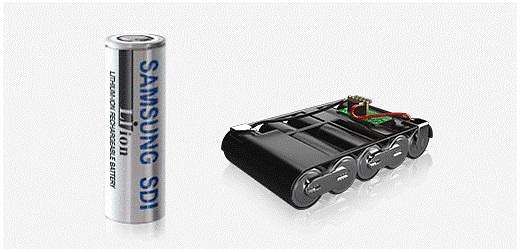Analysis of Lithium-Ion battery cost
Nov 23, 2019 Pageview:1504
There has never been a need for a cheaper source of electrical energy than today. Most devices and appliances require high amounts of energy to function properly.
In the past, the best way to get things moving has been with natural gas. And now there is a new player in the market. Lithium-Ion batteries (Li-Ion) have significantly contributed to the drop in the cost of supplying grid electricity.
There is nowhere in the world you cannot find these batteries. In terms of energy supply and portability, nothing can beat Li-ion batteries.
They have become the long term solution to supplying electrical energy. The power the produce is enough to run anything, as long as the right voltage is achieved. Here are some reasons why the batteries are a hit.
-The cost of supplying energy to natural-gas-powered plants has become increasingly high. Batteries have taken a center stage as a cost-competitive alternative. With increasing demand for such plants, a good alternative serves the purpose in a better manner.
-Portability. Most of the machines using Li-ion batteries today are much lighter than those that depend on natural gas. Consider automobiles, for instance. Electric vehicles are much easier to manufacture and maintain that gas one. They are much cheaper, as well.
-Li-ion battery life and safety. Compared to other batteries, lithium ion batteries have a longer life in terms of both durability and performance. They are more powerful than other batteries with similar features, making them the best alternative. There have been very few cases of Li-ion batteries exploding even with poor disposal.
Despite this popularity, the price has kept changing over the years. Anyone who bought Li-Ion batteries when they were first introduced on the market will have a very different price story from one who just started using them.
Lithium-Ion battery cost per kWh 2019
According to the recent finding from Bloomberg New Energy Finance on LCOE (Levelized cost of energy), the price of Li-ion batteries has significantly dropped. LCOE is simply described as the cost of a technology delivering energy versus its lifespan. Bloomberg has compared several key energy technologies across the globe, reporting that Li-ion batteries are among the major contributors to the drop in energy prices.
Another major factor to consider when highlighting these price changes is the voicing from automakers that future passenger vehicles will be electrically powered. Perhaps not fully – and lack of consensus, but that does stop the market from growing. We can already witness the speed of transition and price changes.
There is a rise in the electric vehicles which has forced automakers to think more about the role of batteries in the in-house appliance.
As such, lithium-ion batteries are becoming more important, despite some contrary misconceptions. For over 30 years, the batteries have been making way into our homes and our lives. With more mobile, medical, and other electric-powered devices coming up every day, the need for batteries keeps growing.
Since 2010, BloombergNEF has been publishing price results for Li-ion batteries. Looking back at the prices from 2012, it is simply amazing how the prices have dropped. Between 2010 and 2018, the average battery pack fell by over 85%. By the end of the last quarter of 2018, the price reached an average of $176/kWh.
And the truth is, these prices are far much lower than this reality. With the current trend, the prices may come to as low as $158/kWh making the batteries more affordable than ever.
The increasing demand, as the market grows more and more comfortable with Li-Ion batteries, has managed to increase productivity, balancing the equation.
Technological development in the Li-ion battery tech is perhaps one of the pillars of price consideration. There has been a considerable amount of improvements to make them last longer and safer. Even though 2019 seems to bring down the price, it has not been witnessed yet, and it may go up.
Checking on many reactions from social media sites, there could be a surprising twist to the story. If demand goes beyond production, then we may not witness the drop. And if it happens, chances are it won’t go very low.
Lithium-Ion battery market growth
Well, there is no denying reliance on electrical powered devices has increased over the past several years. As the future looks really bright for electric cars, Li-ion batteries have kept growing in demand.
One major contributor to the rapid growth is increased use and reducing prices. By the end of 2018, the market capitalization for the batteries was at USD 37.4 billion.
Adroit Market Research has estimated that the market has been growing by a CAGR of 10% since 2017. Analysis by size, share, production, technology trends, and recent developments indicate the Li-ion batteries will hit USD 105 Billion by 2025. 2016 and 2017 are marked as historical year with 2018 marking the base year.
Increase in the developed renewable energy
In 2014 GLOBE NEWSWIRE reported that the expansion of an increase in carbon emissions was posing a great danger to the environment. Owing to this, automobile makers started focusing more on renewable energy. The use of conventional fuels has been replaced by electric vehicle hence increase demands and use of Li-ion batteries. More and more people are adopting renewable energy in their homes more than anything else.
Lithium-ion battery cost protection
Even though figures show the battery price has been dropping, the reality may be different. The argument here is an underlying cost of metals. Apart from that, manufacturers have a desire to increase their margins.
This means the price of Li-ion battery very much relies on the prices of lithium, nickel, cobalt, and aluminum. Also, manufacturers use price as a proxy to cost. Manufacturers have, therefore, for long used margin adjustment to achieve visibility.
This of necessity means the price of Lithium-ion batteries many never drop under $100. The only thing that has increased is supply, making the batteries more accessible and usable.
As more people across the world embrace green energy, demand for Lithium-ion batteries will keep increasing. The price will only come to a level where accessibility no longer becomes an issue to encourage better adoption.
Leave Message
Hottest Categories
-
Hottest Industry News
-
Latest Industry News













